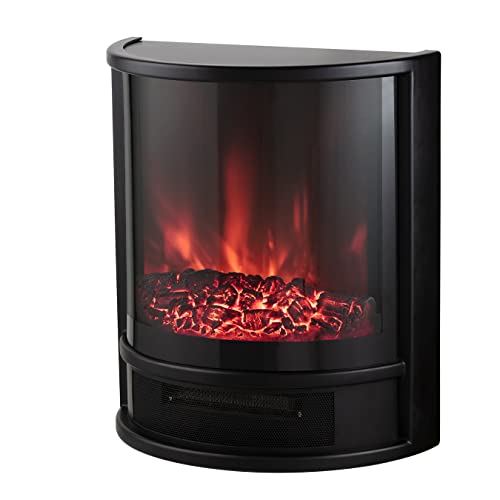7 Simple Changes That’ll Make A Big Difference With Your Wood Burner Fireplace
 How to Get the Most From a Wood Burner Fireplace
How to Get the Most From a Wood Burner Fireplace
 Unlike traditional open fireplaces wood stoves are designed and optimised to burn firewood. This allows them meet tighter emissions regulations.
Unlike traditional open fireplaces wood stoves are designed and optimised to burn firewood. This allows them meet tighter emissions regulations.
Wood burning stoves offer glowing yellow flames, cozy crackling sound and that innate sensation of warmth. However the smoke that it produces includes carbon monoxide and harmful air pollutants like formaldehyde, benzene and polycyclic aromatic hydrocarbons.
Efficient
Fireplaces and stoves that burn wood provide a beautiful and natural heat to the home, they are also extremely efficient. A top-quality wood burner could have an Ecodesign rating up to 77%. It is vital to get the most benefit of your log stove, especially with rising energy costs. The good thing is that it’s easier than ever to do!
The moisture content of wood is one of the main factors that determines how efficient a stove that burns wood is. This is the reason we suggest only using wood that is seasoned, which has been dried for at least one year, but more often two years. The more dry the wood, the better it burns. This means less smoke and less harmful emissions.
A wood burning stove also is an environmentally friendly fuel source, which is beneficial to the environment. By purchasing locally sourced wood, you also help to support the active conservation and management of forests. This is great for wildlife.
The only thing a wood-burning stove needs in terms of maintenance is to regularly remove and get rid of the ash. It can be quite a challenge, but it is worth it to get the most heat out of every log. In addition, if you wait 2-3 days for the ashes to completely cool they can be used to make an eco-friendly and non-toxic ice melt. They can be used to polish jewelry and also absorb odors.
A wood-burning fireplace is an old-fashioned classic. While they’re not as popular than gas fireplaces, their appeal and charm of a fire that is roaring can’t be denied. They’re ideal for cozying up to on cold nights and are an ideal method of creating a warm and inviting space in the heart of your home. Make sure you invest in a high-quality wood burner and you’ll be enjoying the benefits for years to be! Contact us today to learn more about how our experienced chimney sweeps can assist you in getting the most out of your stove.
Low Carbon
Wood burners that burn clean and efficiently are among the best ways to save money on logs while keeping your home warm. Additionally, they also aid in local woodland management, which is a excellent way to help the wildlife in your local area.
Wood-burning fireplaces and stoves create very little pollutant if they are properly maintained and are used with dry, seasoned firewood. If they are not maintained properly or make use of wood that is not of high quality the smoke produced is a result of fine particles, often referred to as particulate pollutants that can cause irritation to the lung organs and other body organs. It also contains carbon monoxide and toxic air pollutants such as formaldehyde, benzene, and polycyclic aromatic hydrocarbons. Inhaling this type of air pollution could cause irritation of the lungs as well as wheezing, coughing, and asthma attacks. It can even lead to serious health conditions such as heart disease, cancer, or premature death.
Some people worry that using a wood-burning stove could contribute to climate change, but this is not necessarily the case. Burning wood is a carbon-neutral energy source. The tree absorbs carbon dioxide over its lifetime. After burning the carbon dioxide is released into the air.
The wood is local, which decreases the amount of pollution emitted in the transportation process. It is crucial to choose hardwoods that have been seasoned and of high quality. They burn longer and more evenly than softwoods.
Modern, EPA certified wood stoves and heaters (such as those manufactured by Charlton & Jenrick) have significantly lower emissions than older stoves. They are certified to meet 2020 EPA standards that are significantly more strict than previous emission limits.
All wood-burning stoves must be fully vented to the outside of your property to ensure that they don’t create a build-up of exhaust within your home. By keeping flames above the logs, and ensuring you use dry, seasoned and dry wood, all of our current clean burn and DEFRA exempt stoves can produce extremely clear exhaust and have particle levels of 60 percent or less below the DEFRA limit.
A wood burning stove with a catalytic converter or a hybrid unit can offer the ultimate low-carbon heating solution. These units re-ignite gases and particles from the initial combustion in a second phase by mixing them with superheated air. The remaining gases and particulates are transferred to a catalytic unit for a final third combustion. This further reduces emissions to levels far below the standards set by the government.
Clean Burn
Cleanburn wood stoves are designed to burn fuel with the greatest efficiency that is achievable. This results in the emission of minimal particles into the air when burning wood. The air management system of the stove controls the intake and venting of gases, ensuring that the combustion process takes place in a safe and controlled environment. It also regulates flame height to maximise heat output and minimise emissions.
This means your chimney and its surroundings will be cleaner than older stoves. Particulate matter (also called particle pollution) from incompletely combusted wood causes respiratory problems such as wheezing and coughing and contributes to the development of heart disease as well as stroke, diabetes, and other serious health problems. Wood burning also contributes to poor air quality in cities.
Smoke from poorly combusted wood contains fine particulate pollutants and harmful air pollutants such as carbon monoxide, as well as other dangerous air pollutants, such as nitrogen oxides as well as volatile organic compounds (VOCs), benzene and formaldehyde. These particles can be absorbed into the lungs, and other organs, causing discomfort and harm, and even death. Dust particles from the air can also cause a hazard to surfaces in your home with a smudge-like sensation.
If you’re using a fireplace with wood burning it is important to use firewood of the highest quality that has been dried and seasoned. dried. The most valuable woods for heating are hardwoods such as beech, ash, and oak. Hardwoods are extremely dense and have higher BTU content than softwoods. They also provide more heat.
Contact your local authority to find out if they have any rules about wood burning. These rules may include rules on odors and nuisances and visible emissions or smoke opacity limitations.
If you have a wood burner with glass doors it is essential to keep the glass clean of dirt and deposits. You can make use of a dry towel or oven cleaner spray to do this. Alternatively, you can mix bicarbonate of a soda with a bit of water to the glass.
Regular maintenance of your stove and chimney is also crucial. This includes regular chimney cleanings to eliminate creosote and ensure the proper functioning of the flue. Also, make sure you mark dates for inspections on a regular basis in your calendar, since this will help you avoid expensive repairs and prolong the life of your wood burner.
Low Maintenance
Many people opt to install wood burning fireplaces due to the natural warmth they generate. This kind of fireplace requires a bit of maintenance and upkeep. If not cleaned and maintained regularly the chimney, flue and stove can all be fire hazards in your home. These fireplaces also provide heat in the event of power outage, particularly during winter storms where tree branches can fall and power lines can be damaged.
If you use a wood stove to heat your home, you can reduce your carbon footprint as compared to other fossil sources of fuel like gas. Modern wood stoves, inserts, and fireplaces are constructed to conform to EPA standards (Environmental Protection Agency), which means they emit very little carbon dioxide. The more well-seasoned the wood is the more efficient it will be as well which means you’ll burn less of it to produce the same amount of heat.
Fireplaces require some care and maintenance. They should be placed away from combustible material and have a screen installed. The air flow can be improved by keeping the grate clean of ash and other debris. This will keep the fire burning longer and your home clean. It is recommended that your stove and chimney swept at least twice per year to prevent the build-up of creosote, which can be a dangerous fire hazard and obstructions that could hinder circulation.
A wood burning stove has to be kept in good order and it could take some time for a new homeowner to master the art of how to ignite, light and maintain a constant fire in the fireplace. Once you’ve learned the art of creating and maintaining the fire in your wood burner, it will be a source of enduring enjoyment that provides heat and warmth for your home all year long.
Wood burning fireplaces have been in use in one form or another for over 500 years. They’ve gained popularity due to their energy efficiency, sustainability and the natural warmth of real wood. If you’re considering installing a new heater, speak with your local Regency certified dealer to learn more about the benefits of a wood stove or an insert for your home.


